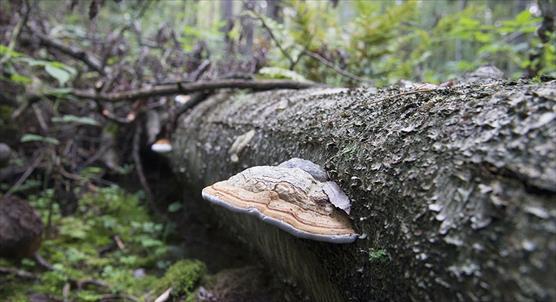Work package 2 compiles information on forest biodiversity and ecologically important quality and structure features of forests. The overall aim of WP2 is to produce a multi-faceted assessment of central biodiversity elements in forested habitats of Finland.
The research will be executed, where possible, at a spatial resolution matching the average size of forest stands, thus enabling direct applicability of the results for forest management and conservation planning. Research material will be extracted from diverse sources, ranging from multisource forest inventory data produced by National Resources Institute Finland (LUKE), to different laser scanning data sets either directly available or compiled by the project, Hyperspectral Imaging data developed using small unmanned aerial vehicles (UAV), species occurrence data produced by Finnish Museum of Natural History (LUOMUS), and database information for red-listed endangered forest species occurrences in Finland (the HERTTA database governed by SYKE).

Dead wood is a critical element for forest biodiversity. Figure by Riku Lumiaro
WP2 produces geographic information material across large areas on the spatial variation of different valuable characteristics of forest biodiversity in Finland, which are required in spatial land use planning and conservation prioritization analysis carried out in Work package 6. Spatio-temporal changes in forest conservation values in different areas will be examined based on the projections of future structural and compositional changes in forests, as well as for the accumulation of dead wood resources. Central theme in these analyses will be environmental and structural changes stemming from different climate change scenarios and different forest use practices.
There are three main research themes:
- This work package compiles geographic information data on the variation of ecologically valuable structure and quality features of forests and forest biodiversity on regional level, and where possible, across the whole forested landscape in Finland. The key baseline for this process is the work conducted in MetZo II –project at SYKE, where the ecological and conservation value of local forest stands are measured based on forest quality and structure data extracted from different national forest statistics sources. Key features in assessing the conservation potential of forest stands is the volume of trees, age and the mean thickness of trees, forest habitat type, diversity of tree species composition, and estimated dead wood potentiality of the site. The quality of these data will be evaluated and the data sources complemented via the collaboration between WPs 2 and 4 in IBC-Carbon. We will investigate, for example, whether remote sensing approaches are able to provide robust surrogates for the stage of naturalness of the forests, their structural heterogeneity and amount of dead wood. Here, laser scanning and hyperspectral remote sensing techniques are the focal study themes.
- Ecologically demanding and endangered species have an important role in assessing the conservation value of forest stands, but the information on their distribution is often sporadic and does not cover wide areas. Using statistical biodiversity models we will study how well the locations of potentially valuable forests can be modelled and predicted, based on the spatially limited species data typically available to the researchers and conservation planners. In addition to demanding and endangered species in a key role are forest species that are indicator species for forests with high conservation value (e.g. the Goshawk and the Three-toed Woodpecker). By summarizing the single species model predictions, the project will also produce forecasts of the spatial concentration of valuable forest species. Taken together, the results constitute predictive maps of locations of forest stands with notable conservation importance over large areas in Finland; these map layers can then be employed in the spatial conservation prioritization analysis in the WP6 of IBC-Carbon.
- WP2 also produces information on the persistence of ecologically demanding forest species and species of conservation concern in economically managed forest landscapes with different silvicultural practices. The project aims to study which type of forest management measures could improve the key habitat conditions of demanding forest species, and whether there are notable differences between different species groups – such as polypores, lichens, mosses and birds – with respect to the supportive management measures as well as forests’ structural features. WP2 will assess, for example, the potential of management carried out as continuous cover forestry, preserving old trees and building concentrations of dead wood for forest biota. The attitudes of different stakeholders for the most useful biodiversity-friendly forest management measures identified in the project, and the possibilities of their wide-ranging incorporation into every-day forest management, will be studied together with WP5.
The results of this WP may be utilized in different various contexts, such as improving the methodology for mapping conservation values of forests and biodiversity-friendly management of forests, and developing the best practices for complementing the spatially incomplete knowledge and forecasts of occurrences of species of conservation concern.
Relevant stakeholder groups for the WP include Ministry of Environment, Ministry of Agriculture and Forestry, Finnish Forest Centre and other actors in forestry, as well different stakeholders engaged in forest conservation planning.